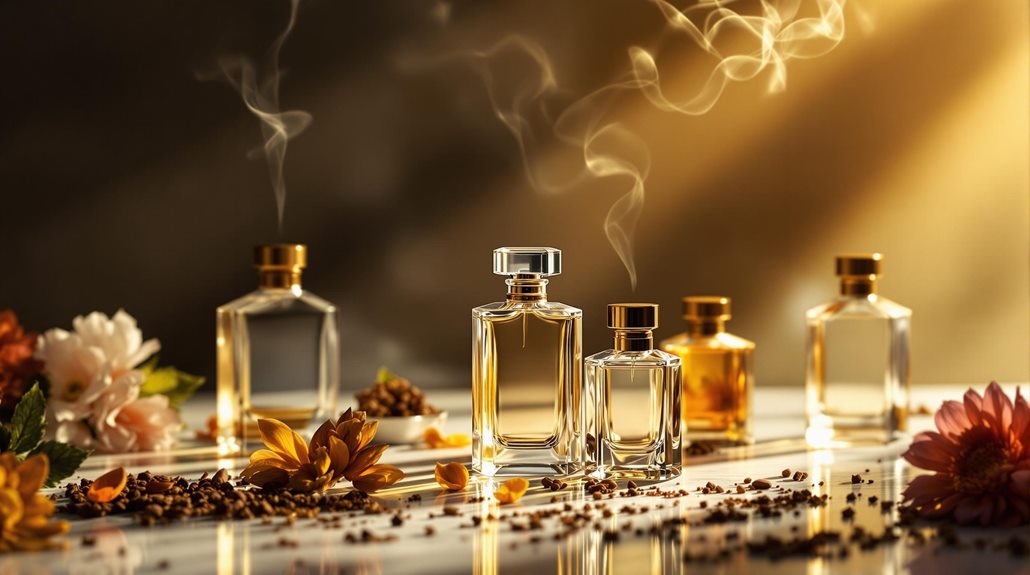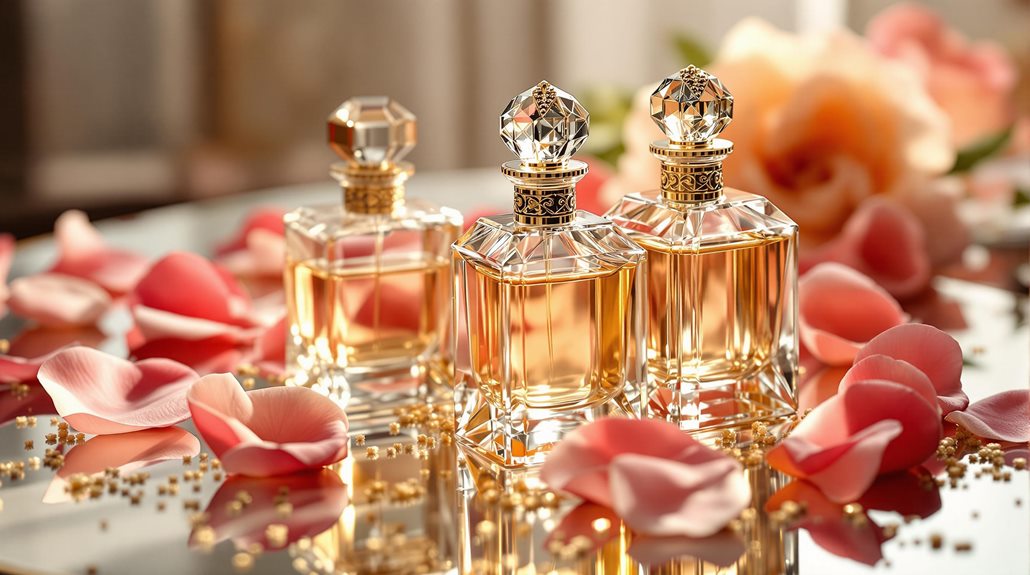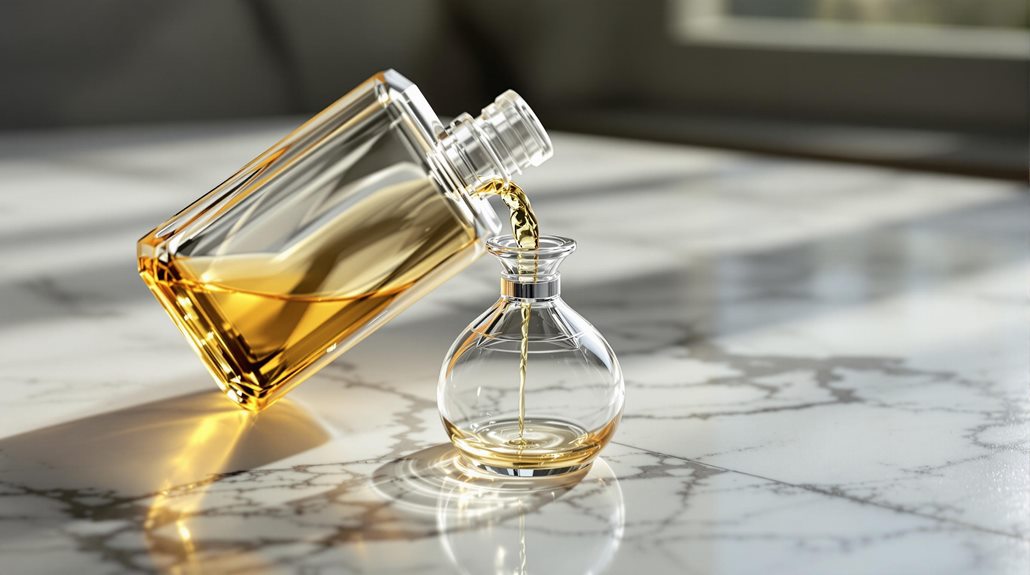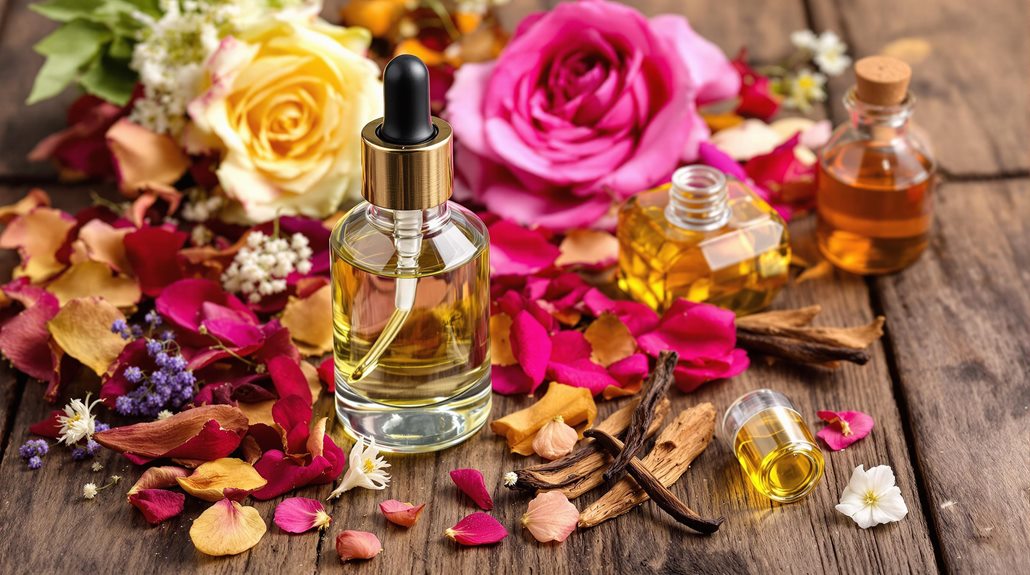What Is Amber in Perfume? Exploring This Popular Fragrance Note
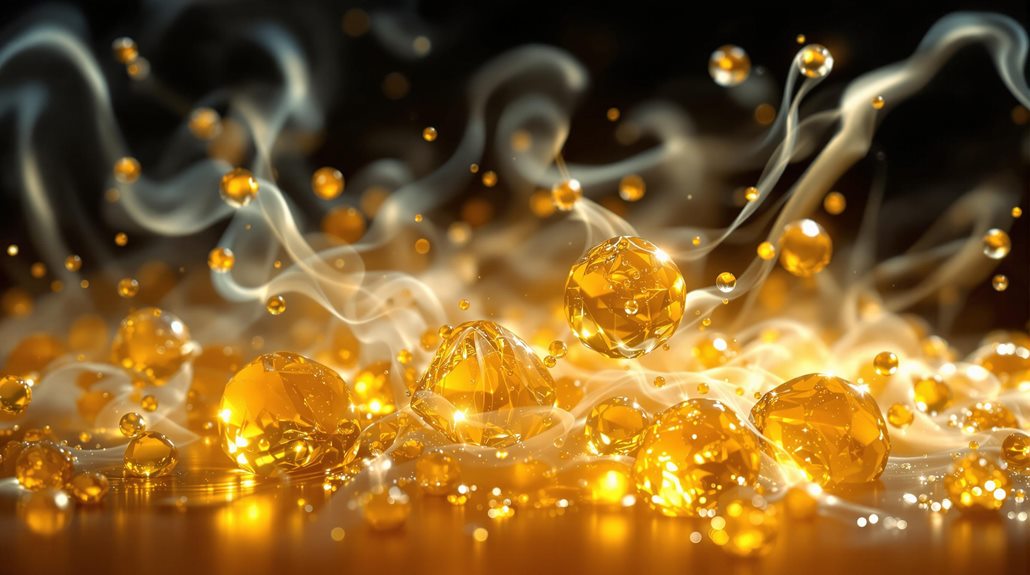
In perfumery, amber isn't actually the fossilized tree resin you might expect. Instead, it's a carefully crafted accord that combines both natural and synthetic ingredients to create a warm, sweet, and resinous fragrance. You'll find this popular note in many oriental and gourmand perfumes, where it delivers a cozy, sophisticated aroma through ingredients like labdanum, benzoin, and vanilla. While natural ambergris offers complex, earthy undertones, synthetic alternatives like ambroxide provide a refined interpretation. This versatile note spans everything from light and powdery to rich and smoky, with countless variations waiting to be unearthed.
Understanding Natural and Synthetic Amber
Two distinct categories define amber in perfumery: natural sources like ambergris and labdanum, and synthetic alternatives such as ambroxide. When you explore the world of amber perfumes, you'll discover that natural ambergris delivers a complex, earthy scent with distinctive animalic notes, while synthetic ambroxide provides a sweeter, more refined interpretation of amber.
Labdanum, a natural resin, plays an essential role in creating the mysterious blend of amber fragrances. It contributes rich, balsamic undertones that often pair beautifully with creamy sandalwood in base notes. You'll find that perfumers frequently combine both natural and synthetic materials to achieve their desired scent of amber, allowing them to craft everything from traditional to modern compositions.
The choice between natural and synthetic amber remains a key consideration in perfume creation. While natural ingredients offer unique complexity and depth, synthetic alternatives provide consistency and sustainability. This duality has led to endless possibilities in amber perfumery, where each approach brings its own impactful characteristics to the final composition.
The History Behind Amber Fragrances
Throughout human civilization, amber has enthralled perfumers and fragrance enthusiasts with its rich cultural significance and mystical allure. From ancient Egyptian pharaohs to biblical texts, this precious material has maintained its status as a coveted ingredient in perfumery.
While fossilized tree resin, or true amber, wasn't directly used in fragrances, its warm, golden essence inspired perfumers to recreate its mesmerizing aroma. They explored two natural materials that would become fundamental to amber compositions: ambergris, a rare substance from sperm whales, and labdanum, a resin extracted from the cistus plant. These ingredients helped perfumers capture the essence of fossilized resin from ancient trees, creating the warm, rich scents we associate with amber today.
The connection between amber and luxury has persisted throughout history. Ancient civilizations prized amber-based fragrances not only for their sensual appeal but also for their supposed mystical properties. You'll find this legacy continues in modern perfumery, where amber remains one of the most beloved fragrance families, celebrated for its depth, warmth, and timeless appeal.
Key Components of Amber Accords
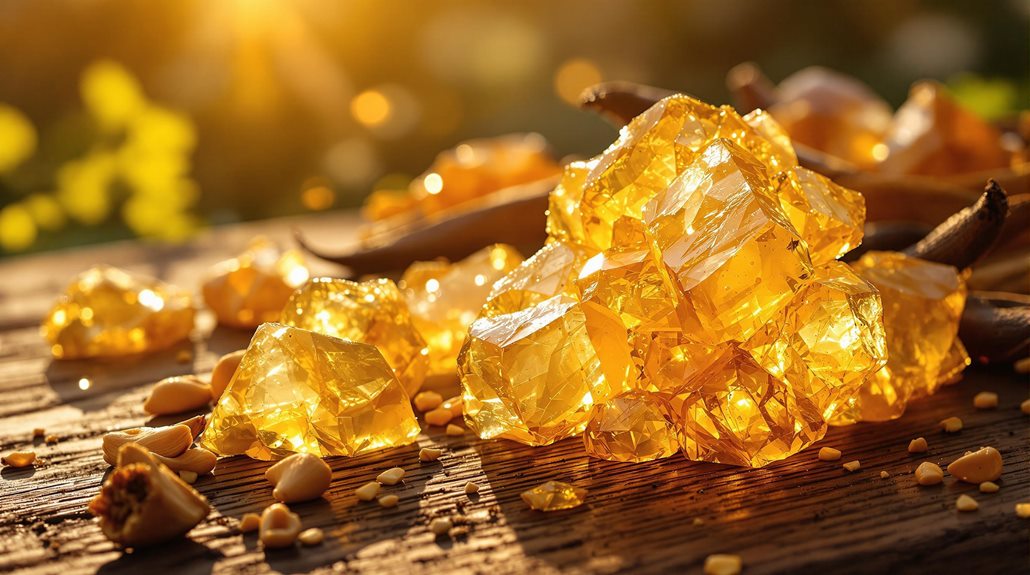
Modern amber accords combine several key ingredients to recreate the signature warmth and richness of this classic fragrance family. While genuine Baltic amber (fossilized tree resin) isn't directly used in perfumery, perfumers blend specific raw materials to capture its essence. The core components typically include vanilla, labdanum, and benzoin, which create the foundational warmth that's characteristic of notes of amber.
You'll find that most amber accords also incorporate tonka bean for its sweet, spicy undertones and coumarin-rich profile. Perfumers often add styrax and Peru balsam to enhance the scent profile with deep, resinous qualities. Some formulations include patchouli or frankincense to achieve a more complex, oriental character.
What makes amber accords so versatile is their ability to blend with various complementary materials. Whether you're looking for a light, powdery interpretation or a sensual finish, perfumers can adjust the ratio of components to achieve different effects. While real fossil amber might be prized for its beauty, it's these carefully crafted synthetic and natural combinations that create the beloved amber fragrances you know today.
Amber's Signature Scent Profile
The allure of amber lies in its distinctive scent profile, which combines warmth, sweetness, and resinous depth into a sophisticated fragrance experience. When you wear amber-based perfumes, you'll notice how the scent unfolds in layers, enveloping the wearer in a complex aroma that's both comforting and luxurious.
Amber's warmth is one of its most recognizable characteristics, creating a warm, comforting embrace that feels like a cozy blanket on a cold day. You'll uncover that amber perfumes can range from soft and powdery to rich and smoky, with each variation offering its own unique interpretation. Some compositions incorporate floral notes to add warmth and dimension, bridging the gap between sweet and resinous elements.
The natural components in amber accords work together harmoniously, producing a scent that's simultaneously nostalgic and timeless. You'll find vanilla and benzoin providing sweetness, while labdanum adds depth and complexity. This intricate chemistry creates a multi-faceted fragrance that adapts beautifully to your skin, making amber-based perfumes a sophisticated choice for those seeking a memorable signature scent.
Popular Amber Perfume Classifications
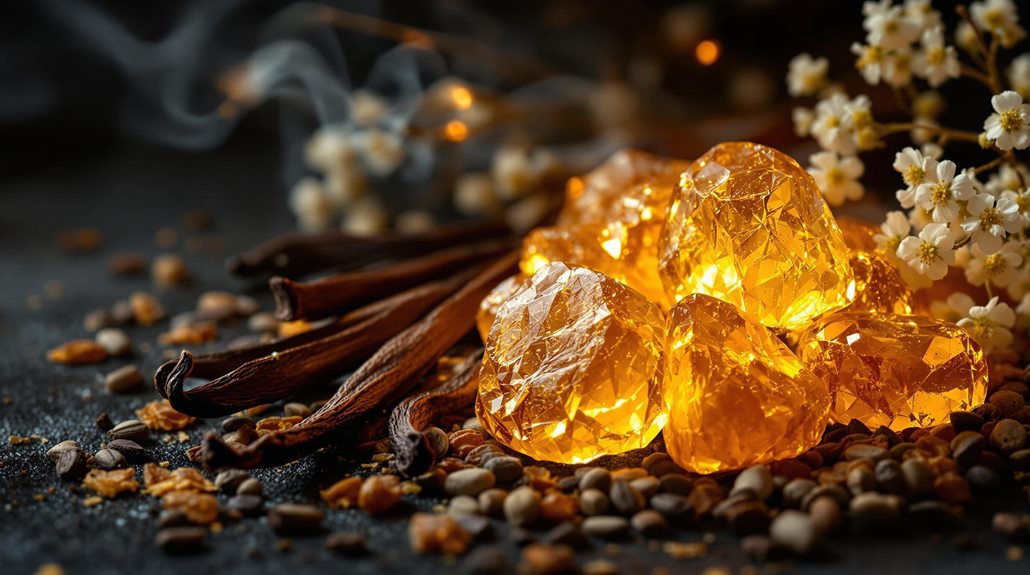
Five distinct classifications dominate the amber perfume vista, each offering a unique interpretation of this beloved fragrance family. You'll find Oriental amber perfumes leading the way with their sophisticated blend of labdanum, benzoin, and vanilla, creating a warm and sensual foundation that's become a classic in perfumery.
If you're drawn to sweeter scents, you'll appreciate gourmand amber fragrances, which amp up the vanilla and introduce tonka bean for a creamier, more comforting experience. Woody amber takes a different approach, grounding the sweetness with earthy notes of patchouli, vetiver, or sandalwood for a more masculine appeal.
For those seeking complexity, floral amber combinations merge amber's richness with delicate florals like rose, jasmine, or iris, creating an intriguing balance between warm and fresh notes. The most intense interpretation comes from dry smoky amber perfumes, which emphasize incense-like qualities through the addition of frankincense, myrrh, or oud. These fragrances deliver a deeper, more mysterious experience that's perfect for those who prefer their amber with an edge of sophistication and complexity.
Conclusion
Now that you've investigated amber's fascinating expedition from ancient fossilized resin to modern perfumery, you'll find it's easier to identify and appreciate this versatile note in your favorite fragrances. Whether you prefer the warm vanilla tones of classic amber or the sophisticated edge of contemporary amber accords, you'll understand why this timeless ingredient continues to captivate perfumers and fragrance lovers alike.

